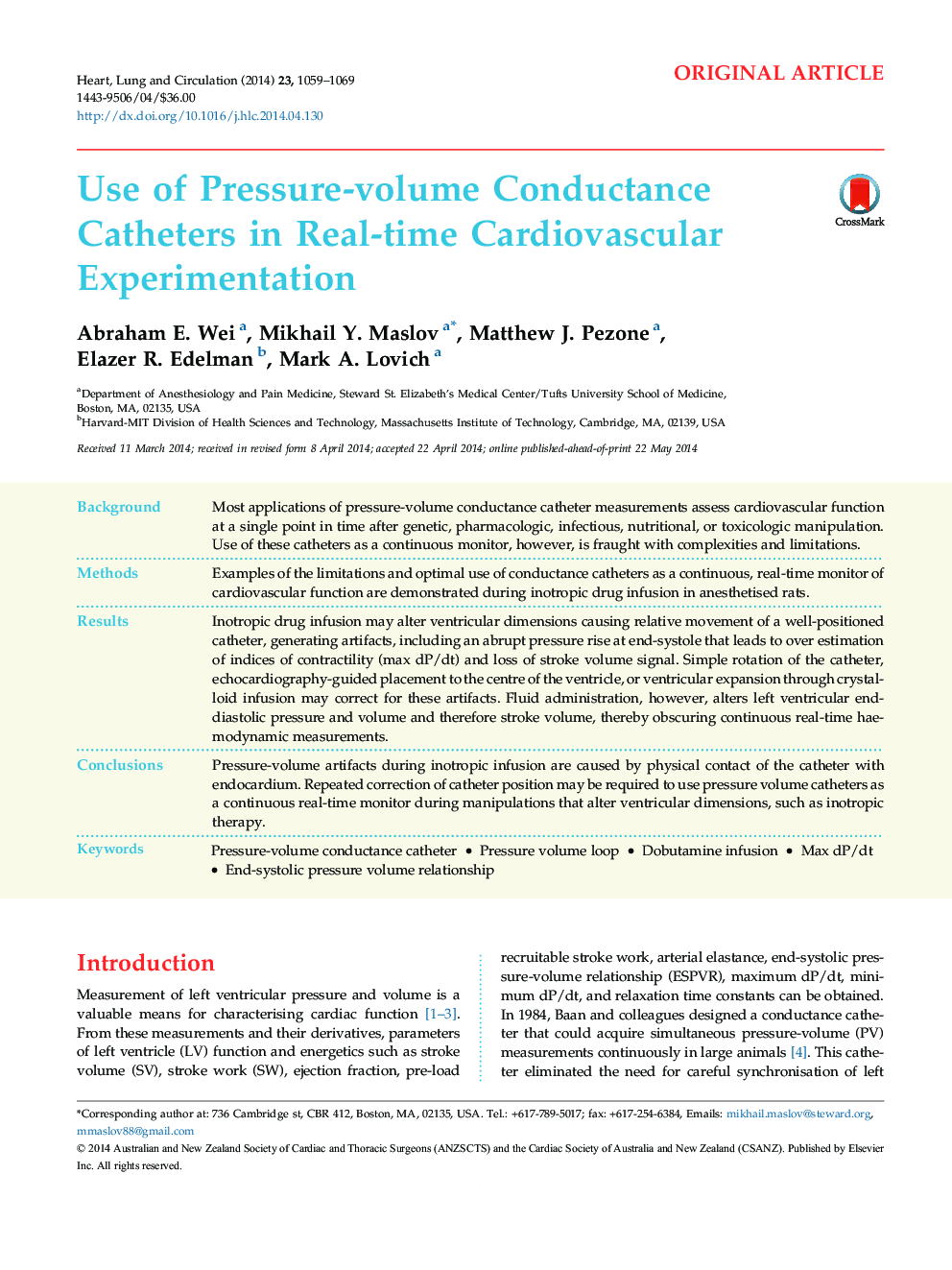| Article ID | Journal | Published Year | Pages | File Type |
|---|---|---|---|---|
| 2917082 | Heart, Lung and Circulation | 2014 | 11 Pages |
BackgroundMost applications of pressure-volume conductance catheter measurements assess cardiovascular function at a single point in time after genetic, pharmacologic, infectious, nutritional, or toxicologic manipulation. Use of these catheters as a continuous monitor, however, is fraught with complexities and limitations.MethodsExamples of the limitations and optimal use of conductance catheters as a continuous, real-time monitor of cardiovascular function are demonstrated during inotropic drug infusion in anesthetised rats.ResultsInotropic drug infusion may alter ventricular dimensions causing relative movement of a well-positioned catheter, generating artifacts, including an abrupt pressure rise at end-systole that leads to over estimation of indices of contractility (max dP/dt) and loss of stroke volume signal. Simple rotation of the catheter, echocardiography-guided placement to the centre of the ventricle, or ventricular expansion through crystalloid infusion may correct for these artifacts. Fluid administration, however, alters left ventricular end-diastolic pressure and volume and therefore stroke volume, thereby obscuring continuous real-time haemodynamic measurements.ConclusionsPressure-volume artifacts during inotropic infusion are caused by physical contact of the catheter with endocardium. Repeated correction of catheter position may be required to use pressure volume catheters as a continuous real-time monitor during manipulations that alter ventricular dimensions, such as inotropic therapy.
